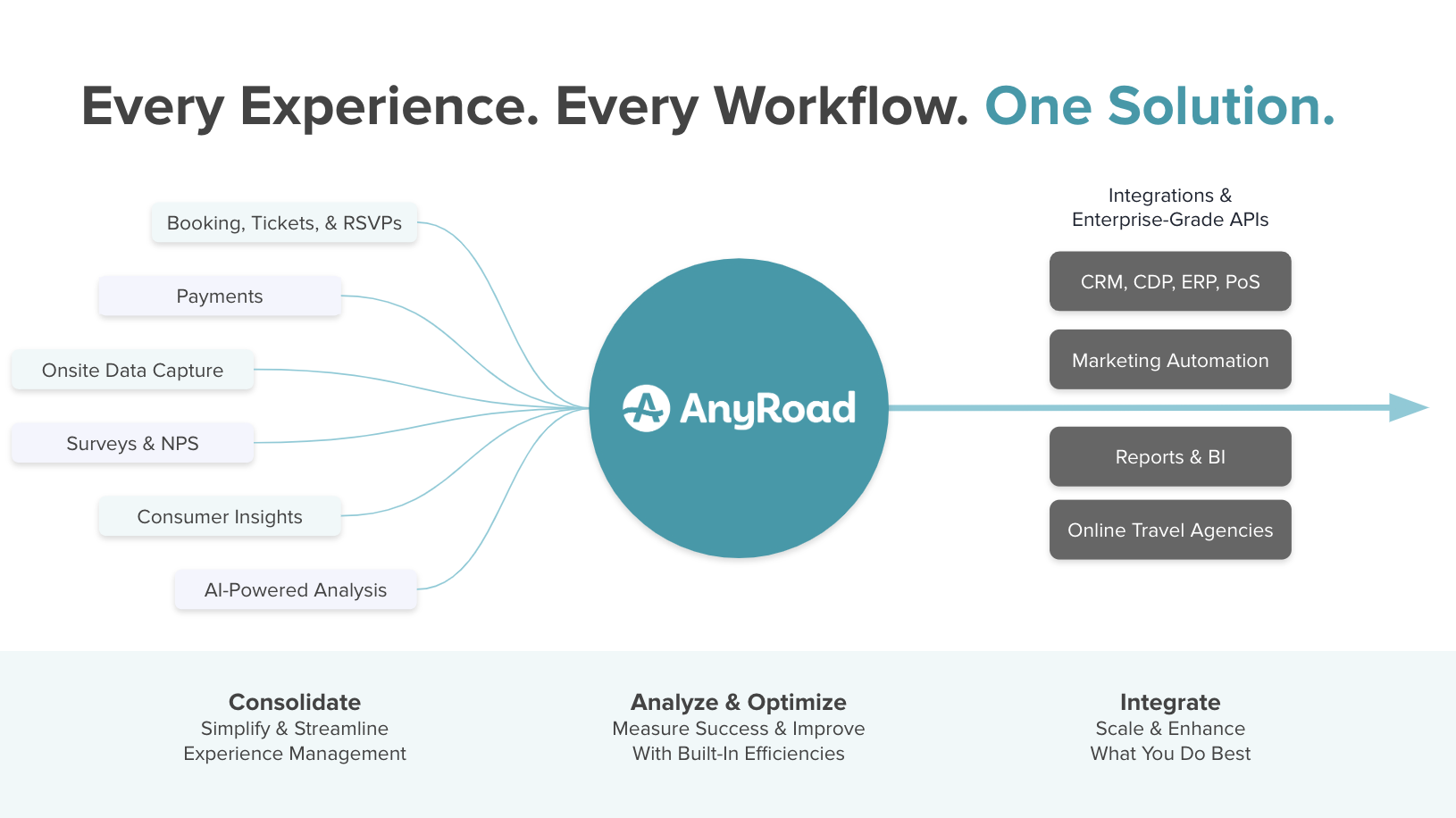2022 is a critical year for breweries and distillery visitor centers aiming to operate at pre-COVID levels through new experiences and offerings to engage consumers.
Based on a recent survey conducted by AnyRoad, brand homes on average currently host 3 different types of experiences.
How many types of experiences do you host currently?

Types of experiences can range from standard tours to more exclusive VIP packages as well as seasonal offerings and craftsmanship tours that focus on the history of the brand and the fermentation process. For brand homes that are trying to determine which experiences they should run to drive the biggest impact, there are a few things to consider.
Consumer Preferences
First, virtual experiences were an ephemeral solution in a time of need. As evidenced by findings from AnyRoad’s Brand Homes Trends Report, virtual experiences accounted for 96% of all experiences in May 2020 but experienced a dramatic decrease, representing less than 1% of all experiences in December 2021. More importantly, the report found that the average net promoter score of virtual experiences was 7 points lower than in-person experiences, which indicates the limited impact virtual experiences have on consumers. While virtual tasting tours and classes provided a necessary outlet in the pandemic-gripped world, the demand for in-person experiences is higher than ever.
Second, despite the rising inflation, consumers’ biggest focus for 2022 is traveling. According to Accenture’s The Year of the New Traveler Report, US consumers’ second-highest priority in 2022 is saving for a trip or a vacation, ahead of saving for retirement, saving for big-ticket items, and saving for a house deposit. This newfound desire to travel is predominantly led by Gen-Z and Millennials, who also happen to represent the two age groups (21-30 and 31-40) that frequent brand homes the most. As the leading demographic in the tourism industry continues to shift, brand homes will inevitably experience amplified effects of the shift in audience.
Third, Gen-Z and Millennials are driving the shift to premiumization. Despite drinking less per capita than older generations, an insight surfaced by Berenberg Research in 2018, Gen-Z and Millennials are more willing to pay for premium drinks and brand-agnostic qualities such as the glassware used to hold the drink, the type of garnishes used, the color of the drink, and the atmosphere in which the drink was consumed. The experience of a tasting isn’t limited to a single sensory element any longer. An experience that can encapsulate how a drink looks, smells, sounds, and tastes luxurious will entice the younger demographic with more success.
Common Blockers
Although consumer preferences outlined above provide a broad outline for brand homes ideating which types of experiences to run, to truly create moments that drive brand impact, more granular and contextual consumer insights are necessary. In fact, brand homes cited acquiring purchase behavior insights such as the likelihood to purchase post-experience, as the type of experiential data they are most interested in.
Which type of experiential data is your brand home most interested in?

Unfortunately, many brand homes don’t have adequate resources to acquire consumer insights, as they are bogged down with staffing challenges, other operational issues, and the inability to capture consumer data in the first place. This results in a detrimental cycle of ongoing expenses to host experiences without truly understanding who the visitors are, why they visited, how much they spend on average, whether they liked/disliked the experience for what reasons, and how much they are likely to spend during the next visit.
What is your brand home’s biggest challenge currently?

It’s no surprise why 2022 is a pivotal year for brand homes in the alcohol industry. However, to fully capitalize on pent-up consumer demand, it’s crucial for brand homes to nail down both the operational and analytical issues that are prevalent across the industry.
If interested in learning more about key trends found in distillery and brewery visitor centers, consider watching this webinar AnyRoad recently hosted. Customer data from renowned brands such as Diageo, Sierra Nevada, Guinness, and members of the Kentucky Distillers Association was analyzed and distilled into useful insights to help brand homes make the best of 2022.
The full report shared in the webinar can be downloaded here.





%204.50.48%E2%80%AFp.m..png)
%2012.57.51%E2%80%AFa.m..png)